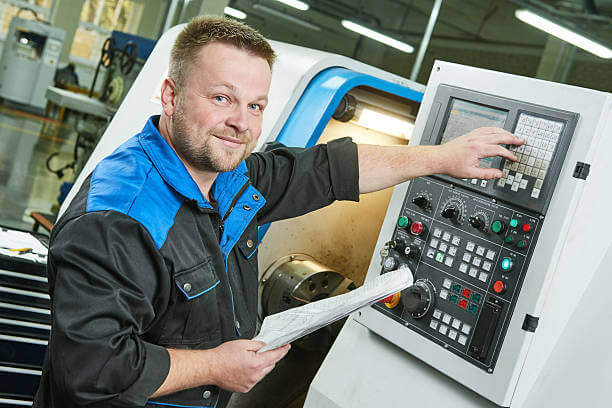3 Most Common CNC Machining Defects & How to Troubleshoot Them
In the realm of CNC machining, defects can undermine the quality of products and squander resources. Understanding common CNC machining defects and their causes is paramount for efficient machining operations and quality assurance. This guide explores prevalent CNC machining defects, their root causes, and strategies for prevention.
Experiencing CNC defects? Contact Tri Star CNC for free phone support, parts repairs, and parts exchanges.

1. Surface Irregularities
Porosity and surface roughness are both critical defects that can compromise the integrity and aesthetics of machined parts.
Porosity
Porosity denotes the presence of voids or air pockets within machined parts, weakening the material. It often afflicts castings, especially those made from materials like aluminum and magnesium.
Causes of Porosity
- Inadequate Venting: Insufficient venting in the mold or die can trap air, causing porosity during casting.
- High Pouring Temperature: Excessive pouring temperature can increase gas solubility, resulting in trapped bubbles.
- Moisture Contamination: Moisture in the mold material or metal itself can vaporize, forming bubbles.
Prevention Methods
- Optimized Venting Design: Ensure proper vent placement and sizing in molds to facilitate air escape.
- Controlled Pouring Temperature: Maintain pouring temperatures within recommended ranges to minimize gas solubility.
- Dry Molding Materials: Preheat molds to remove moisture and use dry metal stock to prevent vaporization.
Surface Roughness
Surface roughness refers to irregularities on machined part surfaces, affecting both appearance and functionality. It can result from tool wear, improper machining parameters, or material properties.
Causes of Surface Roughness
- Tool Wear: Worn cutting tools produce uneven cuts and surface finishes.
- Incorrect Cutting Parameters: Improper spindle speed, feed rate, or depth of cut can lead to rough surfaces.
- Material Hardness: Machining materials with high hardness can increase tool wear and surface roughness.
Prevention Methods
- Regular Tool Inspection: Monitor tool wear regularly and replace worn tools promptly to maintain consistent surface finish.
- Optimized Machining Parameters: Adjust cutting parameters based on material properties and desired surface finish.
- Use of Lubricants: Apply appropriate cutting fluids or lubricants to reduce friction and improve surface smoothness.
2. Dimensional Inaccuracy and Chip Formation Problems
Dimensional inaccuracy and chip formation problems are significant concerns impacting part functionality and machining efficiency.
Dimensional Inaccuracy
Dimensional inaccuracy occurs when machined parts deviate from specified dimensions, leading to fitment issues and assembly problems.
Causes of Dimensional Inaccuracy
- Machine Calibration Errors: Incorrect machine calibration results in inaccuracies in part dimensions.
- Tool Deflection: Excessive cutting forces cause tool deflection, leading to dimensional deviations.
- Material Variations: Variations in material properties, such as thermal expansion, affect part dimensions.
Prevention Methods
- Regular Calibration Checks: Periodically calibrate CNC machines to ensure dimensional accuracy.
- Use of Stiff Tooling: Employ rigid tool holders and cutting tools to minimize deflection during machining.
- Material Inspection: Verify material properties and dimensions before machining to account for variations.
3. Chip Formation Problems and Tool Wear
Chip formation problems and tool wear can hamper machining processes and compromise part quality. Chip formation problems, including built-up edge and chip evacuation issues, can lead to tool wear and decreased machining efficiency.
Causes of Chip Formation Problems
- Inadequate Coolant Supply: Insufficient coolant supply leads to poor chip evacuation and increased tool wear.
- Incorrect Cutting Parameters: Improper cutting parameters result in inefficient chip formation and tool wear.
- Tool Geometry: Improper tool geometry can exacerbate chip formation issues and increase tool wear.
Prevention Methods
- Enhance Coolant Management: Proper coolant selection, delivery, and filtration improve chip evacuation and heat dissipation.
- Optimize Cutting Parameters: Adjust cutting parameters to promote efficient chip formation and minimize tool wear.
- Invest in High-Quality Tooling: High-quality cutting tools with advanced coatings and geometries reduce tool wear and breakage rates.
Nationwide CNC Servicing
By comprehending common CNC machining defects and implementing effective prevention strategies, manufacturers can optimize machining processes, enhance product quality, and minimize waste. Vigilance, proper maintenance, and attention to detail are essential for consistently achieving high-quality machined parts. Contact Tri Star CNC for troubleshooting, repairs and parts exchanges throughout the nation.
WE SERVICE LOCATIONS ACROSS THE UNITED STATES:
California FANUC services
Colorado FANUC services
Connecticut FANUC services
Illinois FANUC services
Indiana FANUC services
Iowa FANUC services
Kansas FANUC services
Kentucky FANUC services
Maine FANUC services
Maryland FANUC services
Massachusetts FANUC services